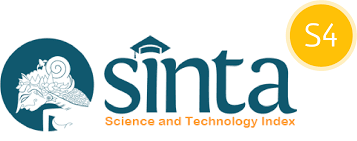Protoptype Pengairan Sawah dan Monitoring Kualitas PH Tanah Berbasis IOT
DOI:
https://doi.org/10.29408/jit.v5i2.5749Keywords:
Motor servo, Node MCU, Sensor pH tanah, Sensor UltrasonikAbstract
Rice is a food crop commodity that produces rice which plays an important role in the economic life of Indonesia. Rice as a staple food is very difficult to replace by other staples. This study aims to determine the results of the design of the internet-based monitoring system for rice field irrigation and to determine the results of monitoring soil pH with Thinger.io. The tools used in the design of this system are Node MCU ESP8266, Ultrasonic Sensor HC-SR04, Soil pH Sensor, Servo Motor (MicroServo 9G – SG90), UTP Cable. Soil pH sensor can send soil acidity level data to NodeMCU and send data to thingger to display results, while ultrasonic sensor can read elevation value on surface if water level (11 cm) then servo will receive signal to open and when water level height value ( 6 cm) then the servo will receive a signal to close, the last process is to send data to the web server or thingger.io. The results of the pH test are that with a pH value equal to 7 then it is suitable for planting rice seeds and if the pH value is below 7 then it is not suitable for planting rice and dolomid lime will be added to neutralize the acidity level in the soil of paddy fields. The tests carried out are using the BlackBox method and the results of this test are the system runs as expectedReferences
C. V Donggulo, I. M. Lapanjang, and U. Made, “PERTUMBUHAN DAN HASIL TANAMAN PADI (Oryza sativa L) PADA BERBAGAI POLA JAJAR LEGOWO DAN JARAK TANAM Growth and Yield of Rice (Oryza sativa L.) under Different Jajar Legowo System and Planting Space,” J. Agrol., vol. 24, no. 1, pp. 27–35, 2017.
S. H. Pratiwi, “Growth and Yield of Rice (Oryza sativa L.) on various planting pattern and addition of organic fertilizers,” Gontor AGROTECH Sci. J., vol. 2, no. 2, pp. 1–19, 2016, doi: 10.21111/agrotech.v2i2.410.
R. C. N. Aini, “Budidaya Padi (Oryza sativa L.) dengan Menggunakan Mikroorganisme Lokal (MOL) di Gapoktan Dadi Rukun Kecamatan Jiwan Madiun,” 2020, [Online]. Available: http://ereport.ipb.ac.id/id/eprint/2808/1/J3W117085-01-Rika-Cover.pdf.
D. Setiadi, “Pentingnya Mengukur Ph Tanah Sebelum Melaksanakan Budidaya Padi,” p. 1, 2019, [Online]. Available: http://cybex.pertanian.go.id/mobile/artikel/81889/Pentingnya-Mengukur-Ph-Tanah-Sebelum-Melaksanakan-Budidaya-Padi/.
T. R. Adzdziqri, Y. Agus Pranoto, and D. Rudhistiar, “Implementasi Iot (Internet of Things) Pada Rumah Budidaya Jamur Tiram Putih,” JATI (Jurnal Mhs. Tek. Inform., vol. 5, no. 1, pp. 364–371, 2021, doi: 10.36040/jati.v5i1.3306.
W. Eka Sari, E. Junirianto, and G. Fatur Perdana, “System of Measuring PH, Humidity, and Temperature Based on Internet of Things (IoT),” Bul. Ilm. Sarj. Tek. Elektro, vol. 3, no. 1, p. 72, 2021, doi: 10.12928/biste.v3i1.3214.
I. Gunawan, T. Akbar, and M. Giyandhi Ilham, “Prototipe Penerapan Internet Of Things (Iot) Pada Monitoring Level Air Tandon Menggunakan Nodemcu Esp8266 Dan Blynk,” Infotek J. Inform. dan Teknol., vol. 3, no. 1, pp. 1–7, 2020, doi: 10.29408/jit.v3i1.1789.
Saberan, A. N. Asyikin, A. A. Putra, A. K. A. Saputro, and R. Wahyudi, “Rancang Bangun Prototipe Buka Tutup Pintu Bendungan Otomatis Berbasis IoT Menggunakan SMS Gateway,” Poros Tek., vol. 10, no. 2442–7764, p. 1, 2018.
L. E. P. Daniel, A. Mahmudin, and K. Auliasari, “PENERAPAN IoT (Internet of Thing) TERHADAP SISTEM PENDETEKSI KESUBURAN TANAH PADA LAHAN PERKEBUNAN,” JATI (Jurnal Mhs. Tek. Inform., vol. 4, no. 2, pp. 207–213, 2020, doi: 10.36040/jati.v4i2.2678.
Y. Efendi, “Internet Of Things (Iot) Sistem Pengendalian Lampu Menggunakan Raspberry Pi Berbasis Mobile,” J. Ilm. Ilmu Komput., vol. 4, no. 1, pp. 19–26, 2018, doi: 10.35329/jiik.v4i1.48.
D. Silvia et al., “Analisis faktor produksi padi di desa guguak viii koto kecamatan guguak kabupaten lima puluh kota,” 2021.
M. R. Hidayat, C. Christiono, and B. S. Sapudin, “PERANCANGAN SISTEM KEAMANAN RUMAH BERBASIS IoT DENGAN NodeMCU ESP8266 MENGGUNAKAN SENSOR PIR HC-SR501 DAN SENSOR SMOKE DETECTOR,” Kilat, vol. 7, no. 2, pp. 139–148, 2018, doi: 10.33322/kilat.v7i2.357.
M. Kautsar, R. R. Isnanto, and E. D. Widianto, “Sistem Monitoring Digital Penggunaan dan Kualitas Kekeruhan Air PDAM Berbasis Mikrokontroler ATMega328 Menggunakan Sensor Aliran Air dan Sensor Fotodiode,” J. Teknol. dan Sist. Komput., vol. 3, no. 1, pp. 79–86, 2015, doi: 10.14710/jtsiskom.3.1.2015.79-86.
R. MEIVALDI, Sistem Pengecekan Ph Tanah Otomatis Menggunakan Sensor Ph Probe Berbasis Android Dengan Algoritma Binary Search. 2018.
A. Hilal and S. Manan, “Pemanfaatan Motor Servo Sebagai Penggerak Cctv Untuk Melihat Alat-Alat Monitor Dan Kondisi Pasien Di Ruang Icu,” Gema Teknol., vol. 17, no. 2, pp. 95–99, 2015, doi: 10.14710/gt.v17i2.8924.
M. K. Imanda, “Penerapan Sistem IoT Sebagai Pemantau Kinerja Pembangkit Hybrid (PLTMH dan PLTS) Menggunkan Thinger I/O,” 2021.
I. Yuan Avisena, W. Kurniawan, M. Hannats, and H. Ichsan, “Monitoring Kualitas Air Tambak dengan Fitur Plug and Play dengan Metode State Machine,” vol. 3, no. 8, pp. 8198–8204, 2019, [Online]. Available: http://j-ptiik.ub.ac.id.
M. Gunawan, Indra; Sudianto, Aris; Sadali, “Alat Pengukur Suhu Tubuh Berbasis Internet of Things ( IoT ) Menggunakan ESP8266 dan Firebase Measuring Body Temperature Based Internet of Things ( IoT ) Using Esp8266 and Firebase,” vol. 11, no. 1, pp. 91–100, 2021.
Downloads
Published
How to Cite
Issue
Section
License
Semua tulisan pada jurnal ini menjadi tanggung jawab penuh penulis. Jurnal Infotek memberikan akses terbuka terhadap siapapun agar informasi dan temuan pada artikel tersebut bermanfaat bagi semua orang. Jurnal Infotek ini dapat diakses dan diunduh secara gratis, tanpa dipungut biaya sesuai dengan lisense creative commons yang digunakan.
Jurnal Infotek is licensed under a Creative Commons Attribution 4.0 International License.
Statistik Pengunjung




